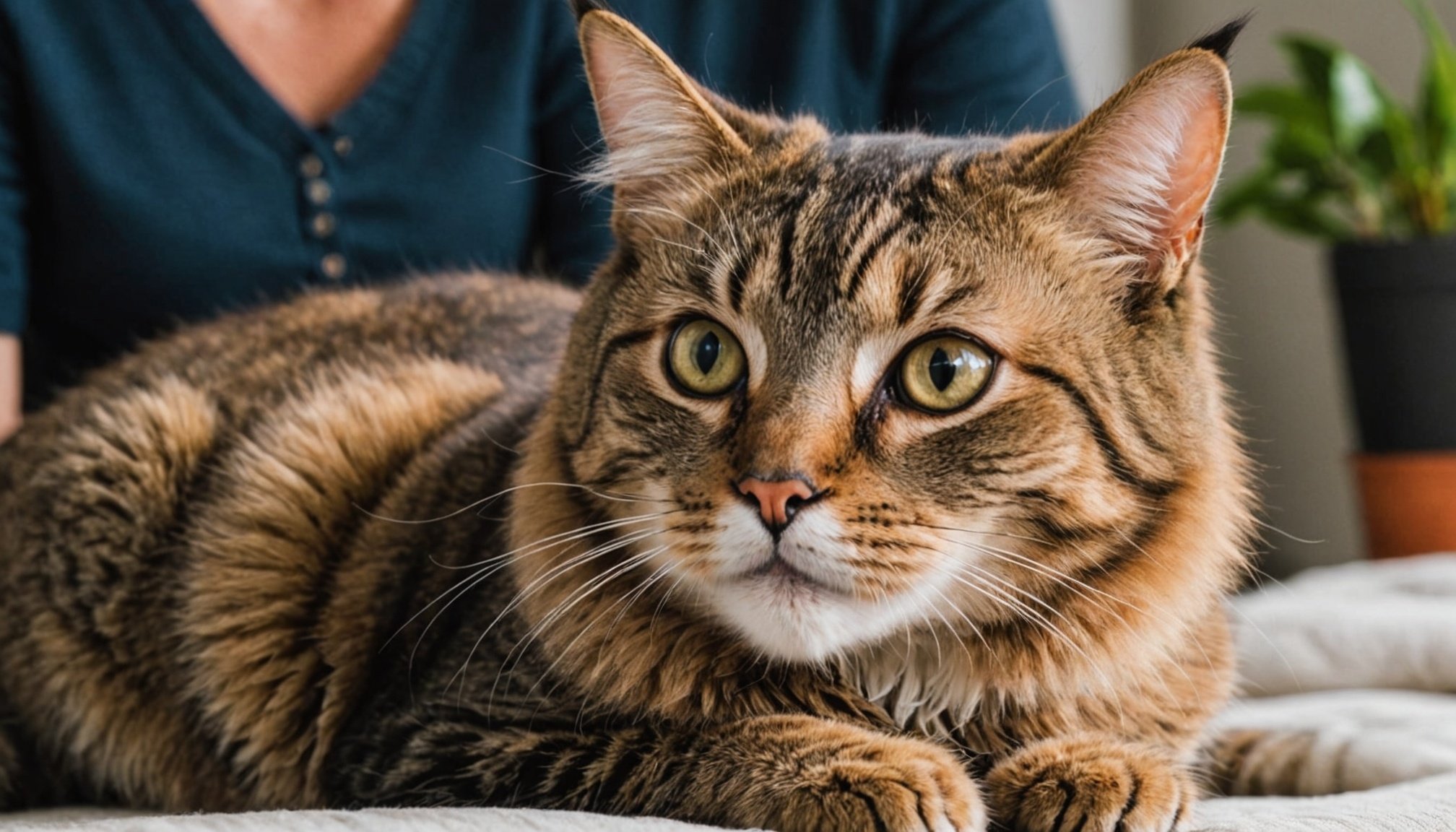Understanding Feline Anxiety
Feline anxiety is a common issue for many cat owners, stemming from various factors that impact a cat’s well-being. Recognising the causes of cat stress is crucial for addressing this challenge. Common triggers include changes in environment, unfamiliar people, or the introduction of new pets, all of which can significantly disrupt a cat’s sense of security. By understanding these aspects, owners can better support their feline companions.
Identifying the signs indicating anxiety in felines is essential for early intervention. Cats often exhibit behaviour changes, such as excessive grooming, aggression, or withdrawal from social interactions. Additionally, litter box issues and a decrease in appetite may signal underlying stress.
In the same genre : Designing a secure and stimulating outdoor haven for cats affected by feline leukemia virus (felv)
Proactively recognising anxiety in cats plays a vital role in managing and mitigating its effects. Addressing these anxieties early can prevent the development of more serious behavioural problems. Ensuring a stable environment and providing mental enrichment can greatly assist in alleviating stress. Consistent routines and safe spaces support a cat’s emotional health. With a deeper understanding, owners can make informed decisions to ensure a happy, healthy life for their pets.
Effective Techniques for Reducing Cat Anxiety
Reducing anxiety in cats often requires a multifaceted approach. Evidence-based behavioural techniques can offer significant relief. These methods include interactive play sessions that channel a cat’s energy positively and structured routines that add predictability to their day, both of which can reduce stress. Additionally, gradual exposure to anxiety triggers, paired with positive reinforcement, can help desensitize cats over time.
Also to discover : Key Factors to Consider Before Welcoming a Special Needs Cat Into Your Home
Making environmental modifications is another practical strategy to promote relaxation. Providing safe spaces, such as cozy hideaways or elevated perches, allows cats to retreat when they feel overwhelmed. Regularly updating a cat’s environment with enrichment activities like cat trees or puzzle toys can also alleviate anxiety by providing mental stimulation.
Furthermore, the use of pheromones and calming products can be beneficial. Products such as pheromone diffusers and calming sprays mimic natural cat pheromones, creating a sense of security. Herbal supplements and anxiety wraps are also options that might soothe anxious behaviours. Each cat is unique, so it may take experimenting with different techniques to determine which method or combination works best for an individual cat. By implementing these strategies, owners can create a more peaceful environment for their feline companions.
Creating a Calming Environment
A calming environment plays a crucial role in maintaining your cat’s well-being. At the heart of this environment are key elements like safe spaces that provide a retreat from stress. These areas encourage tranquility by offering security and predictability, helping reduce anxiety in felines.
Sensory comfort is a vital component of any calming environment for cats. Many felines find comfort in soft textures and subtle scents, so consider incorporating materials such as plush bedding or gently fragranced diffusers designed specifically for pets. Ambient lighting also contributes to sensory comfort, with warmer lights being less startling than harsh fluorescents.
Additionally, sensory enrichment can enhance comfort for your cat. Elements such as interactive toys that emit calming sounds, or touch-activated features, provide beneficial stimulation. Cats thrive when they can engage their natural instincts in a safe space, such as a perch by a window where they can observe nature or a concealed nook where they can nap undisturbed.
By carefully curating these elements, you can create a harmonious environment that supports your cat’s emotional health and encourages peaceful behaviour.
Sensory Enrichment Activities
Sensory enrichment activities are essential for keeping your feline friend content and mentally stimulated. Cats, being naturally curious creatures, thrive on interactions that engage their senses. One popular method involves interactive play. Toys such as feather wands, laser pointers, and electronic mice mimic prey movements, tapping into their hunting instincts. These toys provide not only physical exercise but also mental stimulation.
Engaging in stimulating activities for cats has proven effective in alleviating anxiety symptoms. A bored cat can become stressed or develop unwanted behaviours. Sensory play offers an outlet for pent-up energy and helps reduce nervousness. Bubble Machines and puzzle feeders can also enhance their environment by adding a touch of unpredictability and challenge.
For those seeking recommendations, consider rotating toys to keep things fresh and exciting. Introducing toys that produce sounds or emit scents can add another layer of engagement. Moreover, catnip-filled toys are a perennial favourite and encourage exploration and play.
To summarise, sensory enrichment is a practical approach to keeping cats healthy and happy. By selecting the right activities, you provide your cat with enriching experiences that cater to their natural instincts and emotional well-being.
Expert Advice and Insights
Understanding feline anxiety can be a challenge, yet it’s essential for ensuring your cat’s well-being. Expert advice from veterinarians and animal behavior specialists can offer invaluable guidance. Dr. Jane Smith, a renowned veterinarian, highlights the importance of identifying anxiety triggers such as loud noises or changes in the environment. She suggests creating a calm and predictable environment to help mitigate stress. This is echoed in insights from animal behavior specialists who advocate for consistent routines.
In one notable case study, Mrs. Johnson, a seasoned veterinarian, employed tailored anxiety reduction techniques for a cat showing signs of severe stress due to a new pet in the household. Her approach included pheromone therapy and increased playtime, which resulted in noticeable improvement, demonstrating the effectiveness of these techniques.
Quotations from animal care professionals reveal admiration for such interventions. Dr. Thompson notes, “Implementing these strategies can transform a cat’s life.” With these expert tips, you can skilfully manage your pet’s anxiety, improving their quality of life. It’s crucial to consult professionals who can assess individual needs and propose tailored solutions. In this way, you ensure the best possible care for your feline friend.
Monitoring Progress and Adjustments
Understanding and managing cat anxiety involves continuous care, emphasis on progress monitoring, and appropriate behavior adjustments. To measure the effectiveness of anxiety reduction techniques, it is crucial to observe changes in your cat’s behaviour over time. A tidy litter box or a reduction in yowling might indicate progress. Consider keeping a journal to document these changes, focusing on the frequency and intensity of anxious behaviours.
Adjusting strategies based on individual feline responses is also essential. Cats, like humans, have unique personalities and thus, may respond differently to anxiety reduction methods. If one approach, such as pheromone diffusers, does not seem effective, it might be necessary to switch to alternative techniques like interactive play or calming music. This adaptive strategy helps you tailor the care routine to suit your cat’s specific needs, ultimately fostering a more secure environment.
Lastly, the importance of patience and consistency in care routines cannot be overstated. Anxiety doesn’t vanish overnight; thus, a steady and unhurried approach proves beneficial. Regularly reassess and refine techniques, but remain patient as your cat adapts. Even small improvements are meaningful markers of success on this journey.











